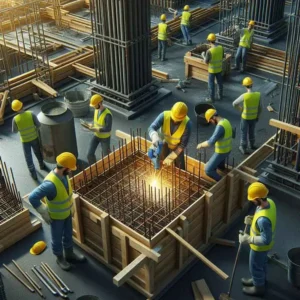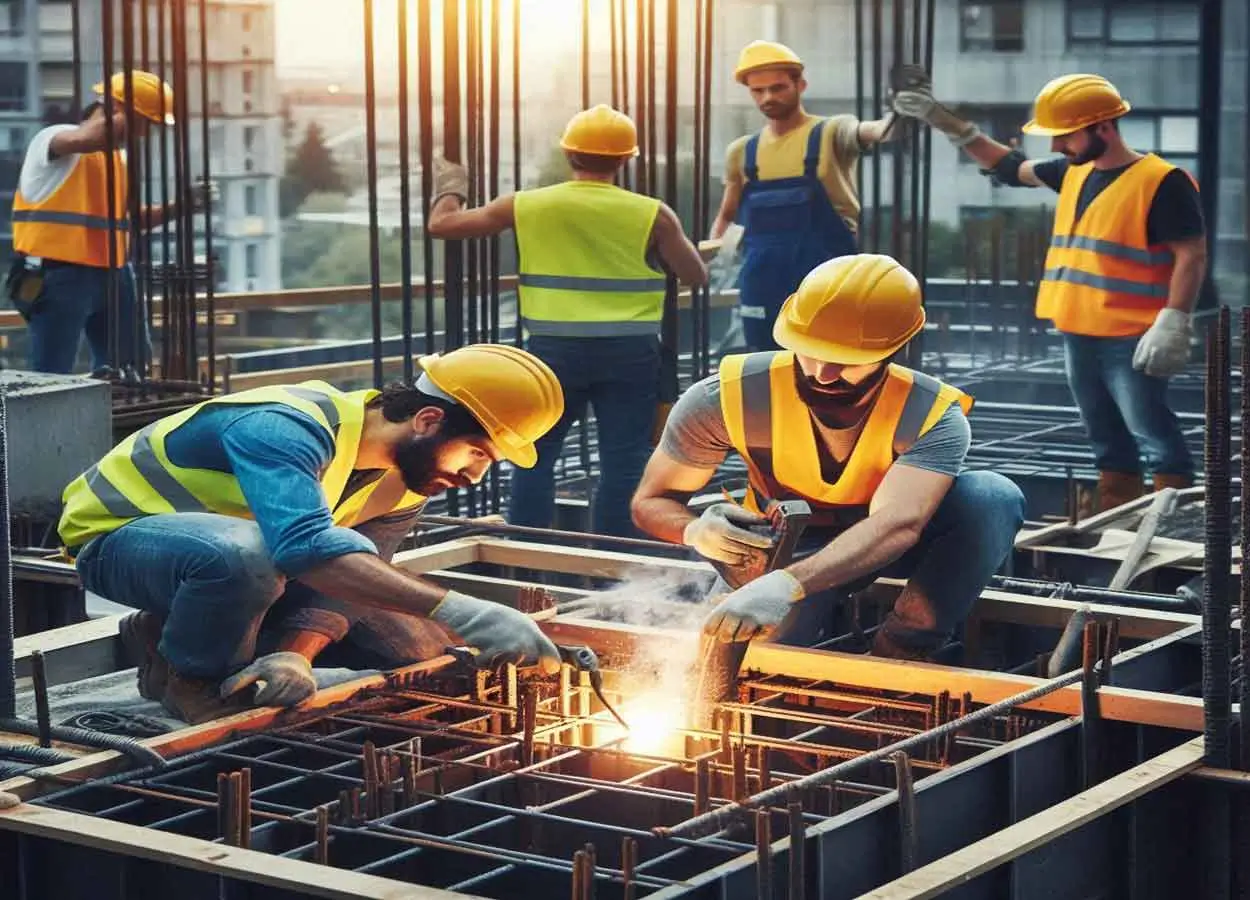Last Updated on July 4, 2024 by Admin
In the construction industry, two frequently utilized techniques are steel construction and concrete construction. Both steel and concrete are known for their strong and long-lasting properties. Also, steel is recognized for its exceptional ability to withstand tension, which makes it well-suited for structures exposed to heavy loads or adverse weather conditions. In the meantime, concrete boasts a high resistance to compression that makes it perfect for supporting heavy loads. In continuation from Taleb Kasimy Trading Co, we will Compare Steel Construction and Concrete Construction.

Strength and Durability in Comparing Steel Construction and Concrete Construction
Strength and resilience are two crucial elements to consider when comparing steel construction and concrete construction. Both materials have distinct characteristics that make them appropriate for various kinds of buildings, but their advantages and disadvantages are quite different. On the one hand, Steel material construction is renowned for its outstanding strength-to-weight ratio, making it a perfect option for tall buildings and bridges. Furthermore, Steel structures can endure heavy loads and harsh weather conditions, making them extremely long-lasting. Moreover, steel is a malleable material that can be easily molded and shaped into intricate designs, providing opportunities for innovative architecture.
However, concrete construction on the other side of Steel Construction has the greatest advantage in its exceptional durability and long lifespan. Concrete structures possess a high compressive strength, providing resistance against cracking and deformation when subjected to heavy loads. Additionally, concrete exhibits excellent resistance to fire and water. Nevertheless, concrete is a denser material than steel, which may restrict its application in situations where weight is a critical factor. Ultimately, it is crucial to assess the specific project requirements to determine the most suitable material. In certain instances, a combination of steel and concrete components may be utilized to capitalize on the unique strengths of both materials.
Cost Efficiency in Comparing Steel Construction and Concrete Construction
Considering cost efficiency is essential when deciding between steel construction and concrete construction. Each material has its own pros and cons regarding cost, so it’s important to carefully evaluate these aspects in order to make a well-informed decision. Generally, steel construction tends to be more economical than concrete construction in terms of material expenses. Additionally, steel is a lighter material, requiring less foundation work and enabling quicker erection, thus saving on labor costs. Furthermore, steel structures are usually prefabricated off-site, which reduces on-site construction time and labor costs even more.
Concrete construction, with its durability and minimal maintenance needs, can ultimately be more cost-effective. Additionally, concrete structures boast a longer lifespan compared to steel structures, which can lead to reduced maintenance and repair expenses over time. It is crucial to take into account the project’s specific requirements when comparing the cost efficiency of Steel Construction and concrete construction. Additionally, elements such as the structure’s size and design should be considered. A comprehensive cost analysis is essential to determine which construction material represents the most cost-effective choice for the particular project at hand.
Structural Versatility in Comparing Steel Construction and Concrete Construction
The adaptability of steel and concrete constructions is a crucial aspect of comparison. Both materials present unique strengths and difficulties in meeting different design needs and project limitations. Steel construction is recognized for its excellent strength-to-weight ratio, which is especially suitable for tall buildings and structures with long spans. Steel’s flexibility allows for elaborate and intricate architectural designs, and the capacity to readily alter or extend existing structures. Additionally, steel is an environmentally friendly material, as it can be recycled and repurposed for future projects. On the other hand, concrete construction is esteemed for its resilience and resistance to fire. Concrete structures are renowned for their stability and ability to endure severe environmental conditions.
When comparing the two materials, it is crucial to take into account the particular demands of the project. These include factors such as load-bearing capacity and seismic performance. Furthermore, Steel Construction might be more appropriate for projects requiring long spans and flexible design options, whereas concrete construction might be the preferred choice for projects needing high durability and fire resistance. Ultimately, both steel and concrete construction provide distinct advantages in terms of structural adaptability like when you use green mesh. Through careful assessment of the project’s specific requirements, designers and engineers can select the material that best fits their needs and ensures the successful completion of the project.

Environmental Impact in Comparing Steel Construction and Concrete Construction
When evaluating the environmental impact of steel construction versus concrete construction, it is important to consider a number of factors. Concrete is commonly used in construction because of its strength and durability. However, the production of concrete significantly contributes to greenhouse gas emissions. The manufacturing process of cement, a key ingredient in concrete, releases large quantities of carbon dioxide into the atmosphere. In addition, the extraction of raw materials like limestone and sand for concrete production can result in habitat destruction and loss of biodiversity.
Steel production has environmental consequences. The manufacturing process of steel consumes a significant amount of energy, often derived from non-renewable sources like coal, leading to the emission of greenhouse gases and other pollutants. Moreover, the extraction of iron ore and other raw materials for Steel Construction can have adverse effects on both ecosystems and local communities. When it comes to construction, steel structures are typically lighter and require less material than concrete structures, resulting in decreased transportation costs and lower energy consumption during construction.
Conclusion
In this article from Taleb Kasimy Trading Co, we discuss Comparing Steel Construction and Concrete Construction. Also, we dive into the several factors of these materials. Also, Taleb Kasimy Trading Co is one of the best hardware store doha and you can buy any tool you want from them with the best price and quality.

